You’re in a meeting with your team.
You’re furious.
You discovered that you are carrying excess inventory that has been sitting idle for several months.
Your vendors do not accept returns.
You don’t want to offer steep discounts because it will harm your company’s brand image and customer perceived value.
But you need to sell the inventory quickly or you’ll have to write them off as a loss.
You’re concerned and looking for new ways to quickly clear them out.
Relax!
This article will dive into the reasons for excess inventory and its disadvantages. We’ll also explore over ten unique strategies to eliminate too much inventory and show how other eCommerce stores are utilizing these strategies.
The Main Causes of Excess Inventory for eCommerce Brands
In 2019, eCommerce accounted for more than 15% of the overall sales worldwide and had seen exponential growth due to the COVID-19 pandemic[*].
Considering the characteristics of eCommerce, inventory management is of chief importance for an effective and timely response to online customers’ demands.
Despite its significance, the issue of warehouse excess inventory is not sufficiently looked after. Excess inventory can be the result of multiple factors, which include:
Inaccurate Demand Forecasting And Predictions
Forecasting expected demand was cited as a top concern by the majority of participants in a Brainyard panel of retailers, distributors, and manufacturers[*].
The traditional way in which eCommerce owners keep their sales and inventory details is in spreadsheets that are no longer effective, especially when the business gets bigger.
A deeper analysis by an inventory management software will reveal that the product’s future demand will likely increase during the holiday season, despite the fact that it is currently declining.
eCommerce stores that deal with fast-moving consumer goods where demand becomes hard to predict, a miscalculation in customer demand often causes excess inventory. This leads to eCommerce over-stocking in slow moving inventory.
Poor Inventory Management System
Inventory management systems consist of many processes starting from record-keeping to receiving of goods. If properly maintained, a company’s operation can run smoothly and efficiently.
But many companies hire unqualified employees to be in charge of their inventory. These employees lack experience, and do not have adequate training. Due to this, they do not pay closer attention to the inventory.
Fear Of Losing A Customer Because Of Stock Out
Businesses often hold too much stock because they fear losing a customer to a competitor because of stockout.
Stockout experience causes customer dissatisfaction which may drive them to a competitor’s online store. According to a study by Financial Training Services, it is estimated that 91% of unhappy customers will never return[*].
But stockout isn’t only about losing customers. Other significant issues will also impact your business:
- Well-planned promotions lose their impact if you are unable to meet demand of your customer.
- Getting items back will take more time and resources.
- You lose a customer, and you lose the profit of that sale
As a result, the threat of running out of stock causes many eCommerce stores like yours to intuitively over-order. And if your suppliers are unreliable, it will ignite the situation further.
Unreliable Suppliers
Having trustworthy suppliers for your eCommerce store is critical for effective inventory management. The ability to strike a balance between low and excess stock is heavily dependent on your supply-chain relationships.
It may necessitate multiple suppliers, closer locations, and suppliers who can deliver materials with little notice.
Assume you sell 1,000 pieces of a particular item every week. The item’s popularity grows as a result of word-of-mouth and advertising. So you intend to place additional orders with your supplier.
Even though your supplier has the item, he holds it for an unknown period of time, causing you to receive your order late.
So next time, when placing your order, you’ll purchase way more than your current demand. And hence you risk ending up having too much stock.
Supply Chain Disruption
The conflict between Russia and Ukraine has already disrupted the supply chain, and it is driving up inflation rates, which may reduce the flow of eCommerce shipments through supply chains due to their cost.
More than 300,000 American companies have supply chain dependencies in Russia or Ukraine[*].
Since the coronavirus pandemic, many businesses are forced to purchase excess stock to mitigate risks because no one knows how long the pandemic and war will disrupt supply chains.
When things begin to normalize, businesses may discover that they have excess products.
This brings us to the next topic,
The Dangers and Disadvantages of Carrying Excess Inventory
Holding excess stock is inefficient because the money spent on acquiring it and the cost of keeping it could have been better spent elsewhere.
When you have an excess of inventory, you have to deal with:
#1. Increase Storage Costs
The most immediate and visible impact of holding excess inventory is the cost of storage. It prevents the tied-up fund from being utilized for buying fast-moving products.
You’ll also have to pay employees to manage that inventory. Management involves maintaining enough space, organizing the list, transporting it from one location to another, and so on.
The more overflowing your storage is with excess products, the more difficult it is to properly manage stock levels, raising the overall cost of storage.
#2. Excess Inventory Represents A Loss of Revenue
Products depreciate and lose their initial value over time. So, the longer a product is stored, the cheaper it becomes, which is more accurate for commodity products.
So you not only spend a lot of money holding the overstock inventory, but you also sell it for a low price. Companies typically sell products at prices lower than what they paid for them, resulting in reduced profit margins and revenue loss.
#3. Demand Variability
Demand is the most shaky thing out there. It is influenced by a variety of external and internal factors, like:
- The product’s cost
- The income of the consumer
- The cost of associated goods
- Consumer tastes and preferences
- The number of market consumers
And such variables are not always predictable. As a result, the inventory you have may not be something your customers want to buy tomorrow.
Everything changes so quickly in the age of globalization that predicting what will happen tomorrow is nearly impossible. The more inventory you keep, the more likely it is that you will lose it due to fluctuations in excess demand.
#4. Perishable And Deteriorating Inventory
The worst that can happen to your inventory is for it to deteriorate or become obsolete. Such incidents may occur only with perishable products which have an expiration date or shorter shelf life.
Furthermore, at any given time, 20% to 30% of inventory is dead, which is a significant number for any organization[*].
And you can’t even sell such dead stock at a loss because no one wants it. And, of course, the last thing you have to do is discard them.
#5. Excess Inventory Ties Up Cash Flow
Until you sell excess old inventory, your investments cannot be recovered. So you are cash tied up and lack the funds needed to replace overstock goods with new or fast-moving products.
Too much inventory becomes a liability because it would tie up cash flow, and the stock has carrying costs associated with it. And this reduced cash flow could make it challenging to pay bills on time and meet payroll requirements.
10 Excess Inventory Strategies to Clear Out Overstock
It is critical to regularly monitor your sales and inventory data to make sound purchasing and marketing decisions.
Still, excess stock issues can arise from factors beyond your control. Whatever the case, there are several steps you can take to get rid of them:
#1. Implement A Minimum Shipping Threshold
Setting a Minimum Order Quantity to avail free shipping is an excellent way to liquidate inventory.
Check out how boutique clothing francesca’s does this:

It tells you how far away you are from unlocking free shipping. It says spend $30.02 more and receive free standard shipping. This encourages the customer to add more items in their bag.
In this, you can help customers by giving options to add to the cart to increase the cart value. Check out how sweet LICORICE candy does this:
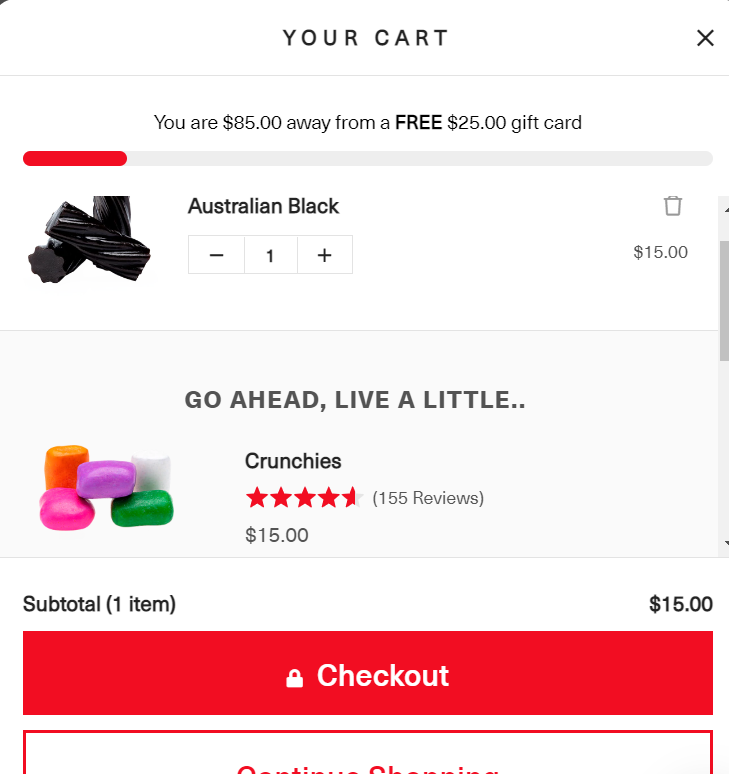
And the options you provide can come from your excess inventory. This not only liquidates your excess inventory but also assists customers in meeting the minimum threshold by adding more products.
With Namogoos Intent-Based Promotion campaign, you can set a minimum shipping threshold something like this:
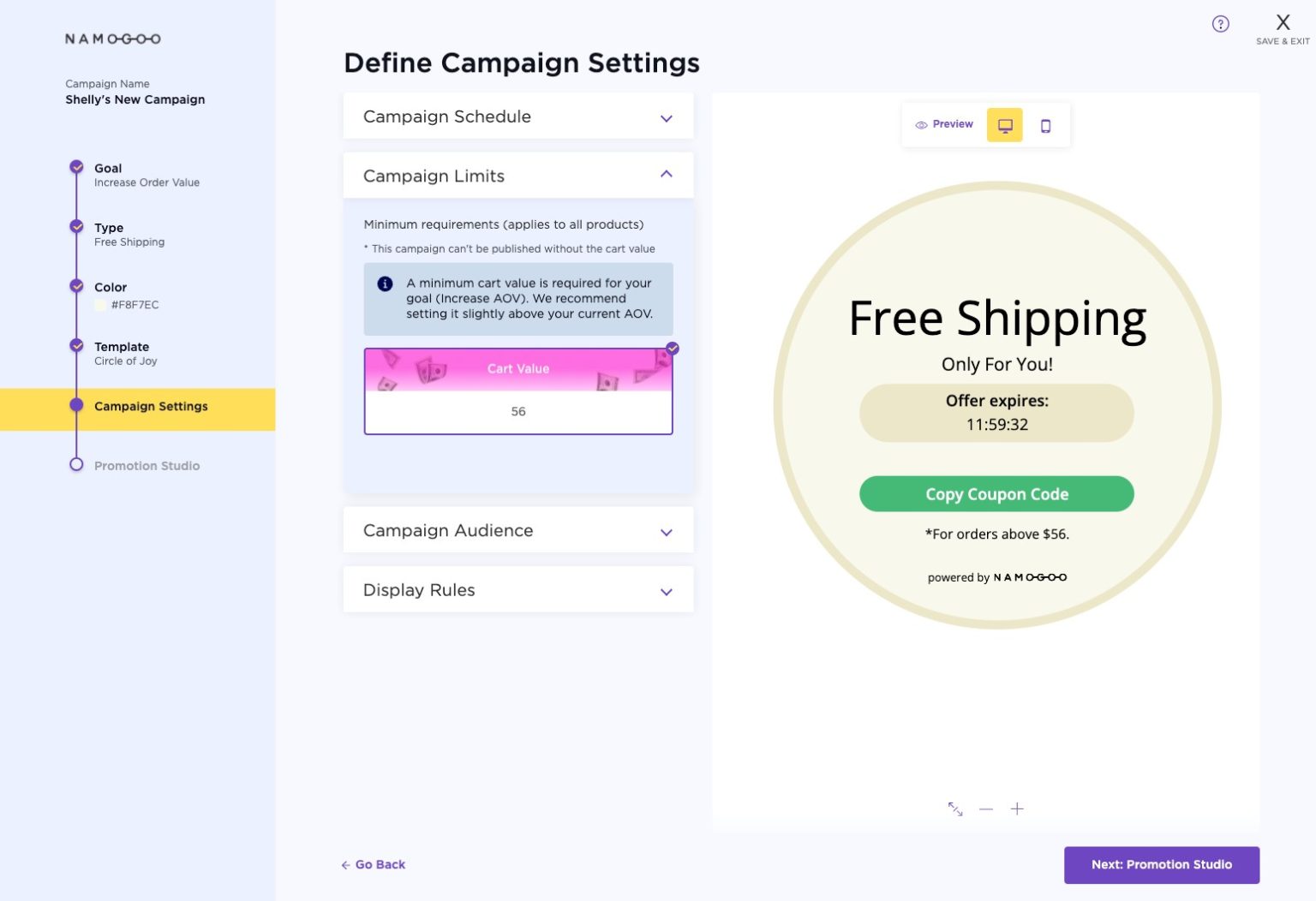
#2. Give the Excess Product As a Freebie With a Minimum Order Value
The word “free” is more than just a price indicator; it’s also a powerful emotional trigger that’s often irresistible.
For most customers, receiving something for free provokes an emotional response- it simply feels better. Free products have a positive impact on your customers’ perception of your company, inspiring loyalty among existing customers while also gaining new customers.
Check out how natural remedy startup Hilma does this by offering a free gift with all purchases over $55:

With this trick, you can give customers what they want (free product) while simultaneously liquidating your excess stock. In this case, you must persuade your customers to make a minimum purchase in order to receive the freebie.
#3. Boost Excess Inventory Sales With Post-Purchase Follow Up
According to a research by Klaviyo, post-purchase emails have the benefit of:
- 217% increase in open rate
- More than a 500% increase in click rate
- 90% more revenue per recipient than the average email campaign[*]
Post-purchase emails are different from shopping cart abandonment emails. And the key to such successful emails is timing and relevance.
Such email campaigns can be sent at various times, such as immediately after, during, and a few days after the purchase.
Check out how authentic designer clothing brand RALPH LAUREN cross-sells through post-purchase email with intelligent recommendations after their customers have made a purchase.

Using historical data on the shopper’s previous on-site browsing behavior and purchase history, you can intelligently recommend items from the extra inventory that can be pulled into an email.
Post-purchase emails are one of the most effective ways to boost your online conversion rate. When sending post-purchase emails, your subject lines do not need to be clever, humourous, or artistic; instead, they must be clear and concise in order to capture your user’s attention.
#4. Re-Positioning Or Repacking Your Product
This is a strategy wherein you can show how your product can be used differently than what you’ve shared before.
For example, you are into apparel selling. So you can show how a particular dress can be styled differently.
Check out how daily fashion blog MY CHIC OBSESSION shows how the same dress can be worn with a completely different look.

Also see how pet care brand chewy is turning to TikTok for the freshest forecast on trending dog fashions for spring 2022.

They highlight three favorite trends on TikTok and seem to keep getting more prominent and more popular with each season.
By showing how your product can be used differently, you convince your potential customers to make a purchase.
#5. Bundle It With Another Product
Product bundling allows you to boost sales, grow your revenue, and improve your customer’s average order value (AOV).
Every online business has some unsold inventory. Though pricing, or packaging may be a problem, you can work on it to increase sales in the long run.
For the time being, however, you can experiment with a product bundling strategy. Check out how the sustainable skincare brand INNBeauty Project combines three products to create a limited edition kit:

It is brilliant to club and create a bundle of slow-moving stock with fast-moving items to push out your excess inventory.
What are the advantages? There are numerous:
- You can quickly sell your least popular or worst-selling products.
- You attract value-conscious customers who were previously uninterested in your brand.
- You may persuade customers to pay more than they would have for individual products.
#6. Collaborating With Other Brands
You can collaborate with other brands that complement your product. In this, you can create a bundle & divide the profit.
Brand collaboration is beneficial if your target audiences and interests seem to be a perfect match. For example – If you sell sunglasses & someone sells winter jackets, you can bundle & sell them together.
You can also think of more creative ways to collaborate. For example, if you sell apparel, you can also try collaborating with pet supply stores.
Because according to the National Pet Owners Survey, 70% of U.S. households own a pet, which equates to 90.5 million homes[*].
Partnerships will raise awareness for both brands while also providing better offers and giveaways to your customers.
You’ll also have a large number of new email addresses for future remarketing campaigns long after the partnership is over.
#7. Donate Excess Items to Charity
A product donation can help your business save money by reducing the time and labor required to liquidate excess inventory.
Even Amazon, the world’s largest online retailer, donates its excess inventory:

Here are some stats which will convince you liquidating your stock through charity is one of the best ideas:
- When making a purchase, 73% of Americans consider a company’s charitable work[*].
- 84% of consumers believe it is essential to them that a company supports charitable causes[*].
- As consumers choose brands based on CSR values, 69% of respondents report that their organizations have generated increased sales due to CSR initiatives[*].
Thus donation also helps to position your company as one with a heart by donating products to those in need, improving your image with both customers and employees.
#8. Take New Product Photos
According to a survey based on 1372 US online shoppers, 87.6% think clear product images make a great online shopping experience[*].
Research was conducted to study the importance of a photo in selling apparel[*]. The criteria that affect the purchasing are:
- Front face photo of the product
- The images that can be enlarged
- The picture of a live mannequin
- Detailed shot of the zipper and belt part
- Reversed photo and photo showing the inside pockets
In short, showing visual examples of the digital application of your product images affects the consumer’s purchase decision. They revealed that photos provide an increase in sales by consumers’ click-throughs.
Check out how Distacart, a global eCommerce platform does this:
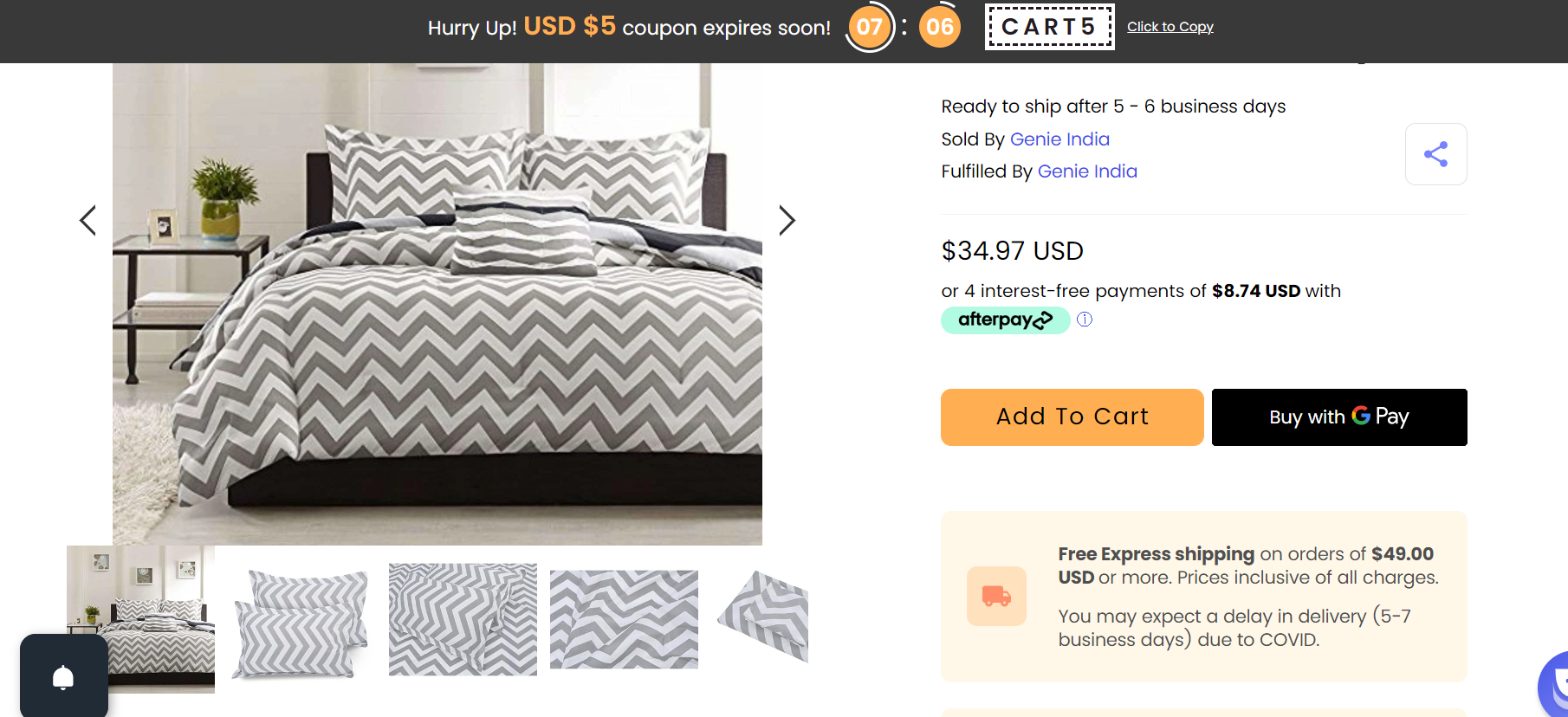
One of the reasons some of your products are accumulating in excess may be that the images are not of high quality. Give your overstock products a fresh look with newer attractive photos.
#9. Decrease Cart Abandonment With BOGO
Cart abandonment is a real problem for eCommerce businesses. The average cart abandonment rate is about 69.57%[*]. And over 72% of merchants consider reducing the number of abandoned carts to be one of their top challenges.
And 65% of merchants use an offer to recover the cart. The classic deal of buy one get one free or buy two get one free is an excellent strategy to retrieve the cart. You must ensure that the free item you provide is from the excess inventory.
Furthermore, not everyone who visits your website is looking for a BOGO deal. So, with Intent-Based Promotions, you can offer discounts to shoppers who are looking for them rather than those who would prefer to pay full price or have no intention of purchasing.
#10. Create Sales Promotions Around Excess Stock Clearance
If none of the above methods worked, offer discounts and create sales promotions centered on excess inventory clearance. Apparel Booster Brand Manager Kat Rosati advises retailers to discount prices in specific increments. “Start off with something small, say 30%, and then continue to discount,” she says[*].
You can also hold a flash sale to create a sense of urgency among your customers. For example, American multinational cosmetics company ESTEE LAUDER offers 40% off for a limited period.

The nice thing about these types of sales is:
- They turn the inventory as desired
- And also often strengthen customer loyalty, boost conversions, and increase your customer lifetime value (CLV).
Create a new Intent-Based Promotion campaign to get started (or, if you don’t yet have an account, schedule a call here). Choose the campaign you want to create.
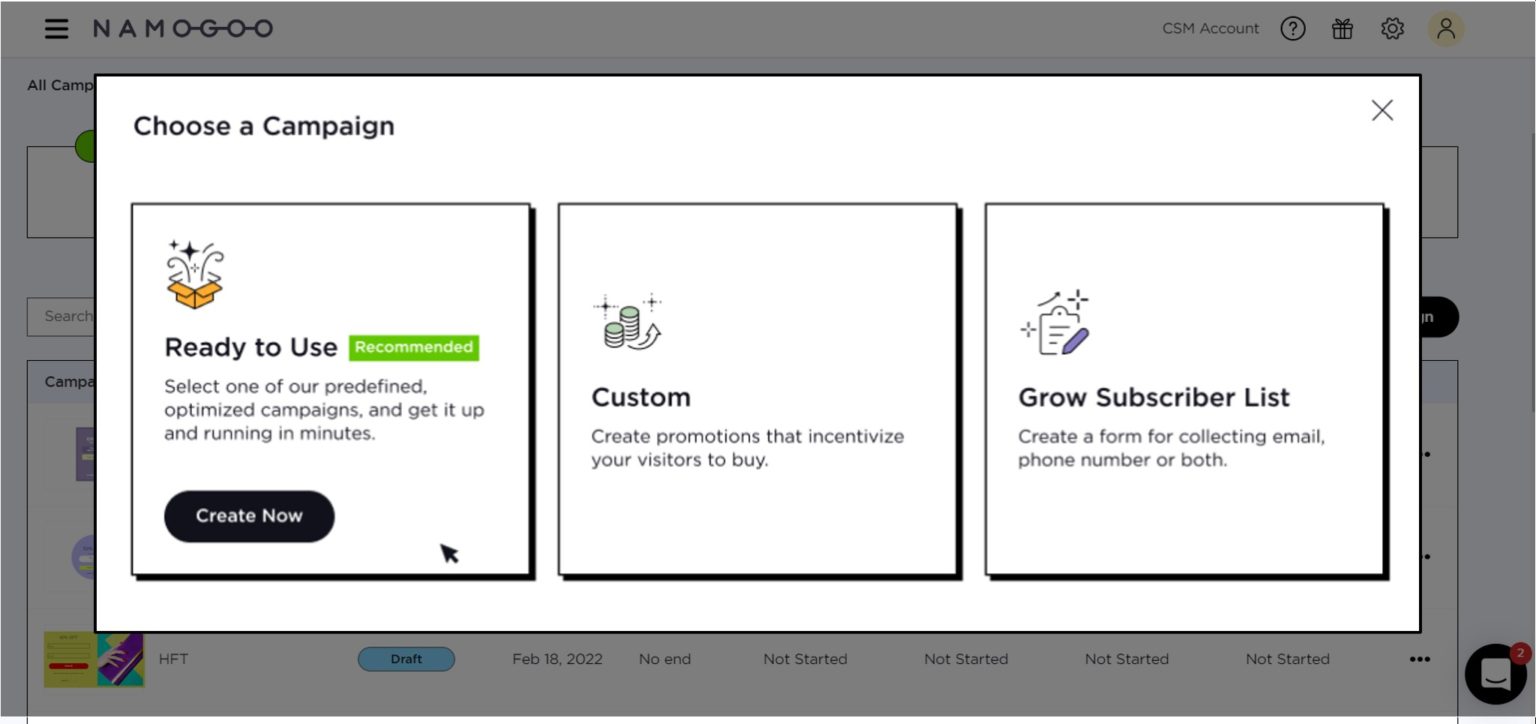
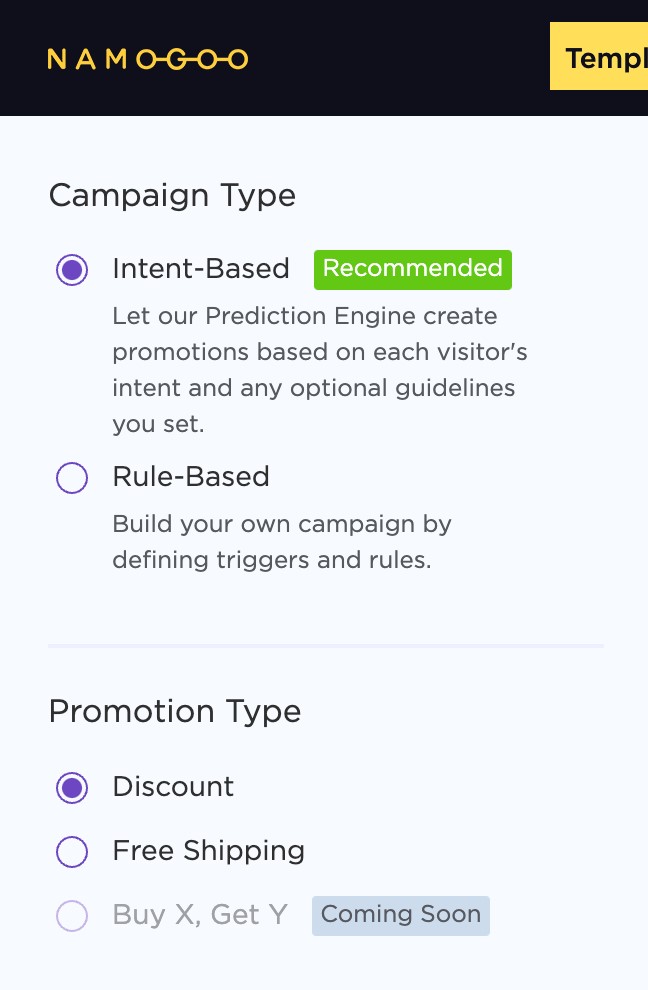
Please Note: Even though reducing the price of a product is a great strategy to eliminate excess inventory, please do not do them too often. As it hurts your company’s brand perception and customer perceived value.
Discounting a product is a proven way to attract customers, but it may not always be the right strategy for your company. For example, if you sell high-end products or you’re trying to preserve a particular image, you have to think twice before running a huge sale.
So Which New Strategy Will You Apply to Sell Your Surplus Inventory?
After reading this guide, you know inventory management is a delicate balancing act between overstocking and understocking.
The strategy that you decide on to sell your excess inventory depends a lot on your business goals.
So now it’s time to determine what method you would implement to sell your overstock inventory.
Disclaimer: This post was written as a sample for a client.

